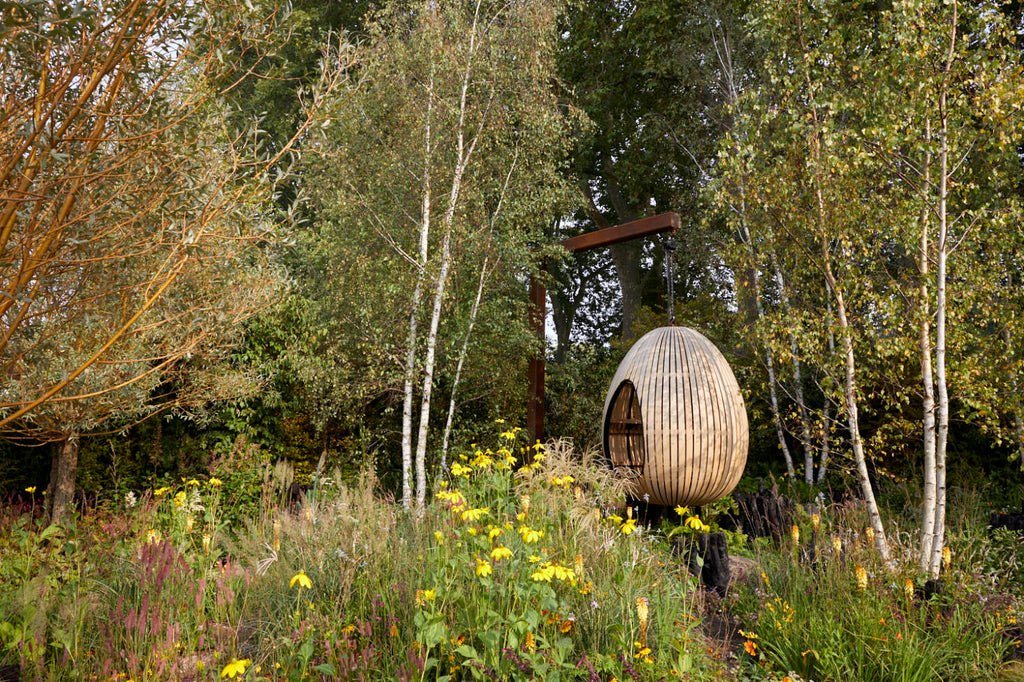Cover image courtesy of Britt Willoughby-Dyer @ gardenista.com
Over the past eighteen months the lockdown experiences around the world have spurred a re-think about the way we live, and those changes are becoming evident in the design of our gardens.
Pre-lockdowns, urban garden design tended to outdoor areas along hard lines, with plenty of concrete and paving, often incorporating another rectangular shape - the swimming pool . The plant list was minimal, and plants were spiky, strappy or mounding, with barely any movement permitted. Inevitably the trees were evergreens.
Now a focus on the natural things in life, being sustainable, growing food and treading lightly on this planet has become important, something that can be easily seen in home garden trends evolving.
And the most fashion forward garden trend of late - converting a portion of the lawn (or all of it) into a small urban meadow of wildflowers. This has gained interest around the world and was a key theme at this year’s Chelsea Flower Show.
Photo courtesy of Claire Coulson @ gardenista.com
Filling the garden with masses of flowers and grasses doesn’t just offer a visual treat, there are other benefits such as leaving the lawn mower in the garage (or using it sparingly – a path through the meadow might only be mowed every three weeks). Attracting butterflies and bees back into urban area is also seen as beneficial because urban fruit tree and vegetable planting has increased the need for pollination for crops to feed the households.
Attracting butterflies and bees back into urban area is also seen as beneficial; but urban fruit tree and vegetable planting have increased the need for pollination for crops to feed the households.
Photo courtesy of Claire Coulson @ gardenista.com
The most common question from gardeners wishing to convert a lawn to a mini meadow, is whether the grass needs to be killed off first. For best results, it does. Ideally spraying the lawn out, then cultivating the soil and spreading Living Earth Garden Mix is the best preparation.
Situation is important – traditional wildflower meadows tend to lie open to the sun – you’ll not be able to replicate this look if your garden isn’t sunny or getting at least half a day of morning sun in summer.
Photo courtesy of Claire Coulson @ gardenista.com
For the seed selection bulk packages of wildflower mixes are available on-line or, grab a few packs of your favourite cottage type flowers and sow the seeds evenly across the area. The kinds of flowers that you would expect to see in a meadow are only limited by the imagination.
Some reliable performers for NZ gardens include poppies, cornflowers, daylilies, gladiolus, iris, yarrow (achilleas), salvias, echinacea, orlaya, phlox, monarda, rudbeckia, cardinal flower, and don’t forget the sunflowers.
Over the season planting a few mature plants will add interest and prolong the season. And don’t limit the meadow to just flowers. There is a place for New Zealand plants too: our coloured mountain flaxes and our carex tend to add structure and interest, as well as producing flower and seed heads for birds and insects. In the gardens of international designers like Piet Oudolf (who is really the father of the natural garden movement) you’ll find our NZ plants tucked around the meadow flowers.
When planting or sowing provide daily irrigation at the start to get plants established, then do your water bill a favour and layer a natural mulch such as bark fines or Forest Floor around the newly emerging plants. The final task for your urban meadow? Sit back and relax in it. Nature will do the rest.
Piet Oudolf garden at Hummelo - Photo courtesy of flowermag.com




